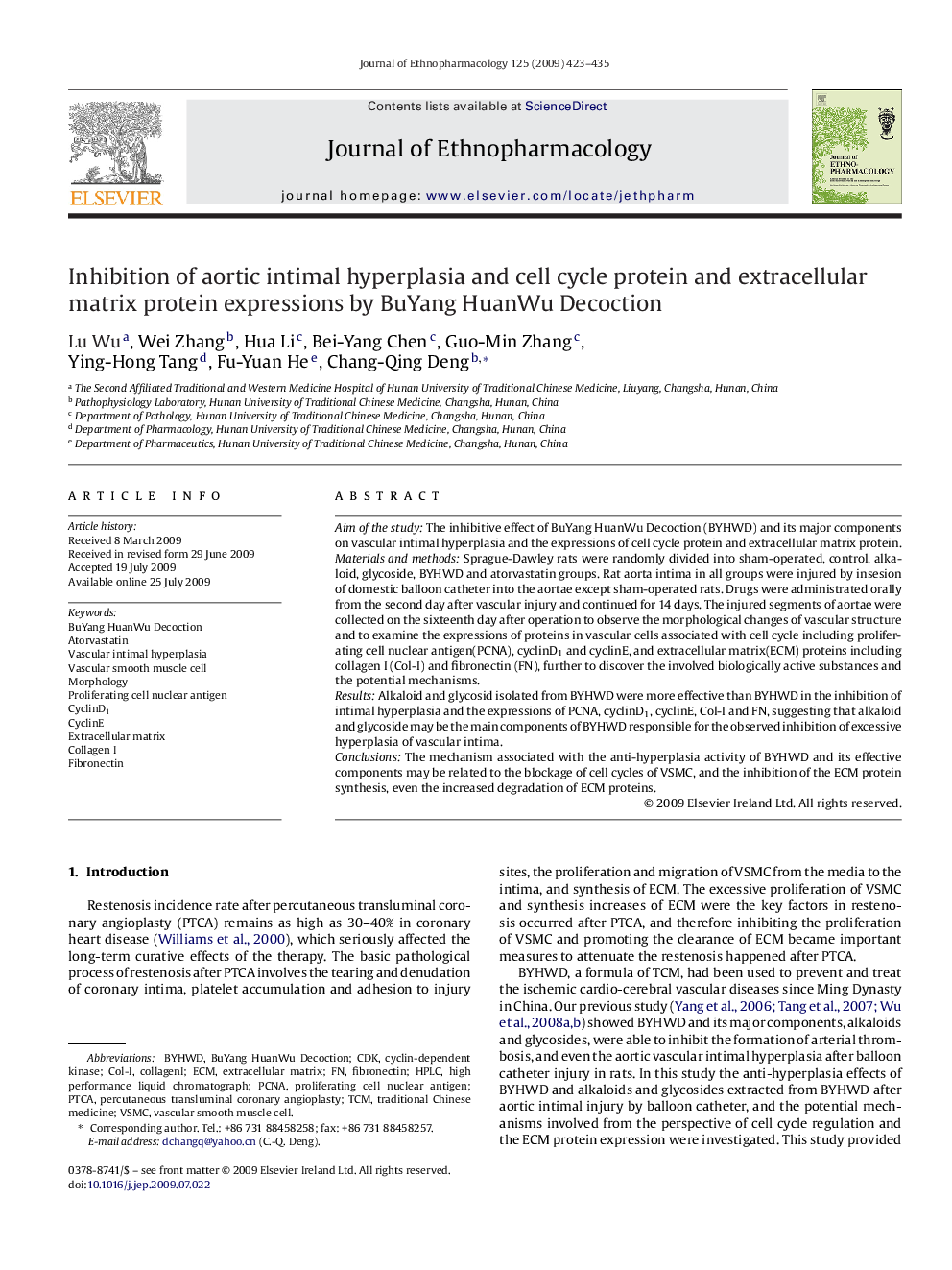| Article ID | Journal | Published Year | Pages | File Type |
|---|---|---|---|---|
| 2546818 | Journal of Ethnopharmacology | 2009 | 13 Pages |
Aim of the studyThe inhibitive effect of BuYang HuanWu Decoction (BYHWD) and its major components on vascular intimal hyperplasia and the expressions of cell cycle protein and extracellular matrix protein.Materials and methodsSprague-Dawley rats were randomly divided into sham-operated, control, alkaloid, glycoside, BYHWD and atorvastatin groups. Rat aorta intima in all groups were injured by insesion of domestic balloon catheter into the aortae except sham-operated rats. Drugs were administrated orally from the second day after vascular injury and continued for 14 days. The injured segments of aortae were collected on the sixteenth day after operation to observe the morphological changes of vascular structure and to examine the expressions of proteins in vascular cells associated with cell cycle including proliferating cell nuclear antigen(PCNA), cyclinD1 and cyclinE, and extracellular matrix(ECM) proteins including collagen I (Col-I) and fibronectin (FN), further to discover the involved biologically active substances and the potential mechanisms.ResultsAlkaloid and glycosid isolated from BYHWD were more effective than BYHWD in the inhibition of intimal hyperplasia and the expressions of PCNA, cyclinD1, cyclinE, Col-I and FN, suggesting that alkaloid and glycoside may be the main components of BYHWD responsible for the observed inhibition of excessive hyperplasia of vascular intima.ConclusionsThe mechanism associated with the anti-hyperplasia activity of BYHWD and its effective components may be related to the blockage of cell cycles of VSMC, and the inhibition of the ECM protein synthesis, even the increased degradation of ECM proteins.
